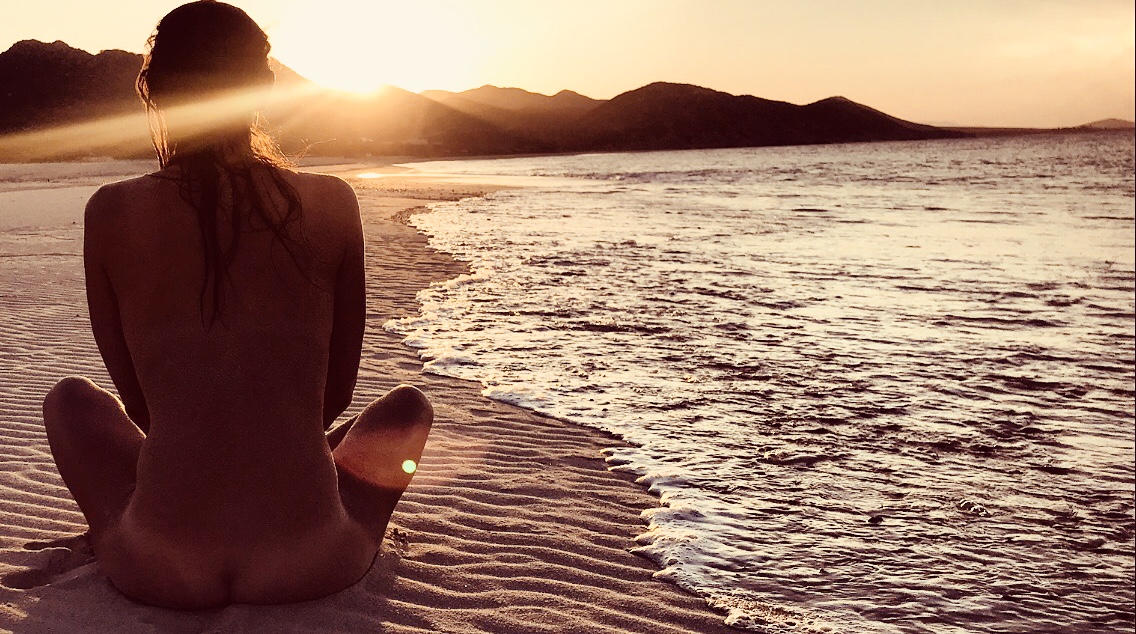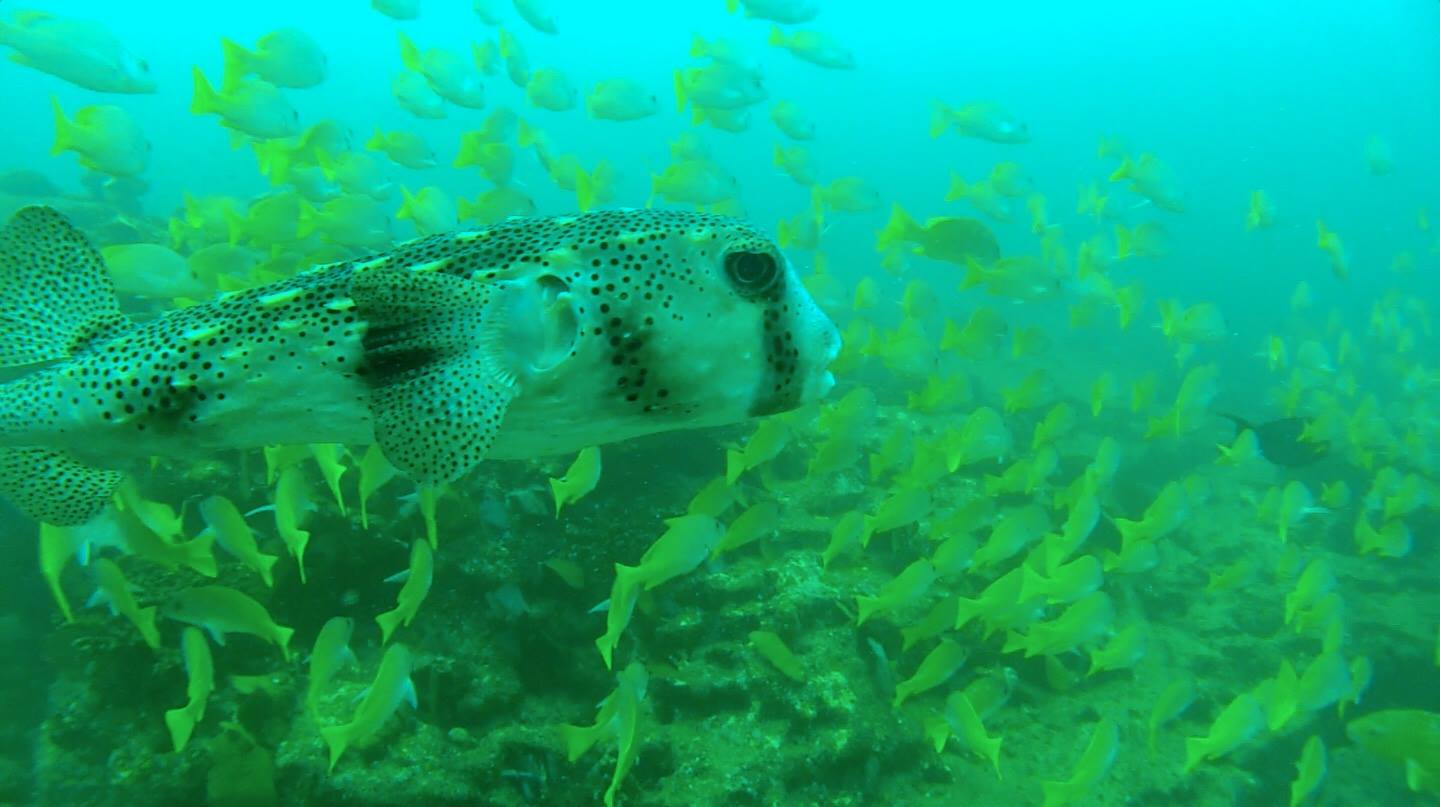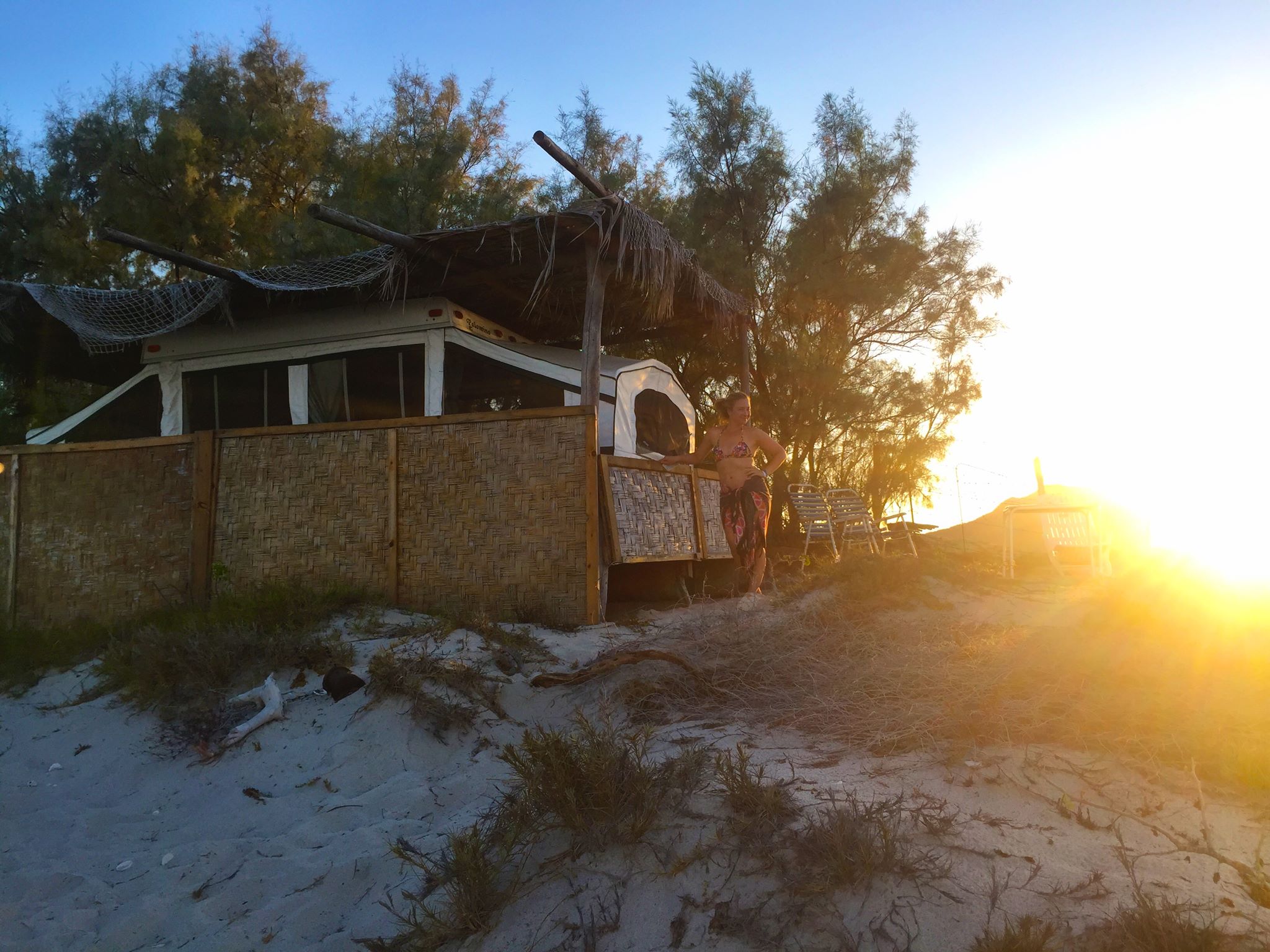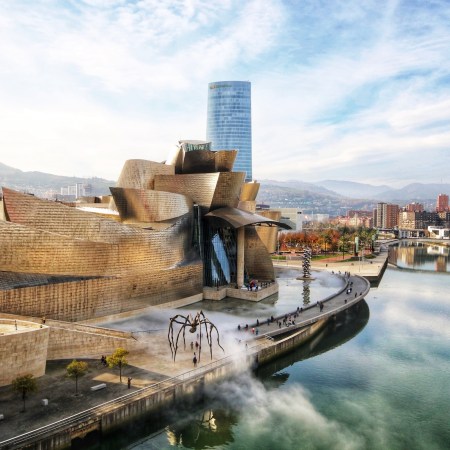There are certain places that as a travel journalist, I struggle to write about.
On one hand, I want to keep these pocket oases to myself…as a personal, secret paradise. To keep it safe from the crowds I go there to avoid. On the other, I find it a life-long responsibility to share these gems, and inspire others to have the experiences I consider pure life- and perspective-altering bewitchment.
So, it is with a bit of a mixed conscience, I share with you one of my favorite personal escapes…Cabo Pulmo, Mexico.
A tiny little town, if you can even call it that, set where the Sea of Cortez meets the Pacific, on an empty stretch of dirt road somewhere in Baja. Hidden in plain sight; Just over an hour drive from Cabo San Lucas; yet absolutely worlds away.
I travel a lot. I am chased through life by the feeling that realistically I’ll never, in one lifetime, get to visit all the places I want to see and explore. Therefore, I very rarely go back to the same place more than once. I make few exceptions to this rule, and when I do, there has to be some otherworldly magnetism. Cabo Pulmo offers my soul a respite that’s hard to find elsewhere. Maybe it’s the vastness of the desert, with its rugged, dry mountains kissing the electric blue sea. The magnificent saddle of the ridge- line illuminated by fading rays of sunlight, with a classic sliver of moon hanging just low enough to seemingly graze the rocks. That’s what I see when I close my eyes and think of Cabo Pulmo.

There are no all-inclusive resorts, high-end hotels… or really any hotels at all. Accommodations are mostly bungalows and a few AirBnB options. The people who travel to this remote corner of the world have a similar sensibility: They are not tourists. They are mostly divers, scientists, explorers, a few young travelers making their way off the beaten path, and a handful of folks who stumbled there in following some dusty road a little further than planned.
The marine park that put Cabo Pulmo on the map — within the dive community at least — was created in 1995, after the biodiversity of the area was decimated. Over-fishing, shark-finning, and overall habitat destruction turned a once thriving ecosystem into one as barren as desert as the land that surrounds it. But a few people saw hope — and an opportunity. If they could prove that nature really does find a way and bounces back from annihilation, they could make a solid argument for protecting other areas. Additionally, educational efforts were made to train the locals to see the economic opportunity in being care-takers. After just over a decade of protection, the park is now bringing in over $500,000 a year to the tiny local economy.
The main attraction in the waters off Cabo Pulmo has become the bull sharks.
The area has a thriving population of them, but that wasn’t always the case. Before the marine park was established, large predators had all but disappeared.
The park became a UNESCO World Heritage Site in 2005 and is home to the oldest of the only three coral reefs on the western coast of North America, and estimated to be around 20,000 years old. Today Cabo Pulmo is regarded as a monumental success story in marine conservation. Its biomass has bounced back over 400 percent since the inception of the park.

The diving is so spectacular in those waters that National Geographic regularly posts stunning images of divers engulfed in massive schools of jacks, swirling in the shallows like a silver tornado of fish. In addition to National Geographic, The BBC and Dr. Silvia Earle’s Mission Blue have all made documentaries here. When the heavy hitters of the nature documentary world show up, you know the offerings are pretty extraordinary.
Thousands of mobula rays, the mantas smaller cousin, arrive in summer jumping out of the water in aerial displays of agility and re-entering the blue with loud slaps that would put the Three Stooges to shame. Orcas consider them a delicacy and arrive in the warmer months for an all-you-can-eat buffet. Dolphins and sea turtles swim by to see what divers are up to on any given day. Whales migrate through in winter heading north to give birth. Reef fish dazzle with displays of color, and divers flock like the salmon of Capistrano to bear witness to it all.
Jacques Cousteau called the area, “The aquarium of the World,” and there is no mystery as to why. The park offers 17 dive sites for both novice and experienced divers that range in depth from 60-100 feet. The water temperatures revolve between 65 and 80 degrees Fahrenheit, and different seasons bring various wildlife.
Sharks of all kinds frequent the area. Tiger sharks, hammerheads, nurse sharks, lemon sharks, silky sharks, Galapagos sharks, both black tip and white tip reef sharks, and of course the bull sharks, which have returned in such numbers that scientists have been going down in teams to tag and study the predators.
If bull shark sightings are a diver’s goal, October is the best time to come, according to experts. The El Vencedor wreck is one of the best places to find them. No chumming is allowed in the park and interactions are strictly monitored by dive masters, ensuring both the sharks and divers safety.
John Steinbeck also described the reef in his 1951 book The Log from the Sea of Cortez.
“The complexity of the life pattern on Pulmo Reef was even greater than at Cabo San Lucas,” he wrote. “Clinging to the coral, growing on it, burrowing into it, was a teeming fauna. Every piece of the soft material broken off, skittered and pulsed with life, little crabs and worms and snails. One small piece of coral might conceal 30 or 40 species, and the colors on the reef were electric.”
That description still holds up.
The town itself is built around diving. One dirt road, two or three small eateries, a few bungalow style accommodations, and a tiny grocery market offering bare necessities share space with a handful of dive outfitters — all within 500 feet of each other.
Camping on local beaches is a special option here, and one that I would recommend in terms of experience and safety, but my personal favorite place to stay in this small desert oasis is The Cabo Pulmo Eco Palapa. A little rugged escape from all things ordinary, it offers stars, shells, scorpions, geckos, sweeping beaches and the marine sanctuary from your back door. Sunsets and sunrises are included.

Your options are a few pop up trailers on the beach with community restrooms; the main house with a thatched roof that offers multiple rooms; or the eagles nest, a perch with 360 degree views of the beach, the surrounding desert and mountains. The last is my favorite and houses one large iguana that keeps watch over you from the rafters, and a nest of mourning doves that return year after year just outside the window. There is no air conditioning, so it’s a bit hot in the summer months, but a constant breeze makes it bearable.
A sandy trail leads to the most magnificent stretch of beach on which you’ve ever laid your eyes. One could easily be forgiven for thinking anything more than your birthday suit feels overdressed. I’ve spent many hours floating there in warm water that leaves a delicious patina of salt on your skin. I’ve strolled the dunes searching for shells and expired puffer fish, occasionally stopping to perform the meticulous dissection of leathery unhatched turtle eggs. I’ve sat enchanted with my surroundings as the sun dipped behind the mountains and the most brilliant stars came out to greet me. I’ve lounged on the sand gazing out over the water to watch distant lightning kiss the clouds, and plunged into the brine for one more swim before bed, surrounded by bioluminescence that mimics the glittering radiance of the stars overhead.
Bliss. Pure bliss.
A few years ago, when we first discovered the Eco Palapa Bill, the owner, an ex-pat from Colorado who built the place himself, taught us to look for scorpions with an ultraviolet light. We spent hours wandering the desert searching the dunes like some bikini-clad CSI unit. The scorpions glow with a green blue light offering the mixed emotion of experiencing a particularly fascinating natural phenomenon with equal parts creepy realization that they are absolutely everywhere. (For the record, it’s the hyaline layer of their exoskeleton that fluoresces in the light.) Upon my return home after that first trip I immediately purchased a UV light and now regularly wander deserts looking for scorpions.
There are a handful of restaurants in town, although It’s sometimes difficult to discern what’s an eatery and what’s just someone’s backyard. Please note that Cabo Pulmo is mostly cash only, and there are no gas stations in town, so prep accordingly.
La Palapa, on the waterfront, is a good place for fresh fish tacos and beers located within sight of trucks loading dive boats into the water.
Caballeros offers tasty Mexican fare and a strong margarita. It’s a laid-back location with colorful tables and super-nice folks who take good care of you. In the same building is the local grocery market offering the basics — eggs, bread, vegetables, wine and tequila.
Tito’s is another relaxed spot on the other side of the street that one could easily mistake for someone’s home, the best kind of eatery in my book. They have a tasty menu, great service and one hell of a margarita. I’m pretty sure nowhere in Cabo Pulmo operates by the rule of “no shirt, no shoes, no service.” That would exclude 90 percent of their clientele.
The Coral Reef restaurant is part of the Cabo Pulmo Dive Center complex offering diving, bungalows, and food. I’ve dived with them, stayed in their bungalows and eaten at the restaurant. It’s the one area that has a Cabo San Lucas vibe and was also a rather poor dive experience so ill politely leave it at that and move on. All the other dive outfitters are quite good and have lived there for years, making diving their passion as well as their livelihood.
The restaurants close occasionally to restock their provisions — or because, well, it’s Cabo Pulmo — and you are forced to improvise. Just south of town is a beach where local fishermen live and bring in their catch. On just such an afternoon that all eateries were shut for the day, we drove toward the fishing encampment on the outskirts of the marine park, and with our broken Spanglish explained we wanted to purchase a fish. We bought a beautiful red snapper and the men expertly filleted it for us on the spot.
The author procured fresh fish filleted and cooked by local fisherman on the spot. (Kinga Philipps)Pulmo is derived from the Latin word for lung, which makes sense because I certainly breathe easier when I’m there. You feel a certain kinship with the few other visitors who frequent this place; a sense you should exchange a wink and a nod as you’re both in on a little secret. It seems almost prudent to speak in hushed tones so the crowds just a mountain range over don’t overhear and come flocking to this little slice of desert heaven.
For more travel news, tips and inspo, sign up for InsideHook's weekly travel newsletter, The Journey.






















